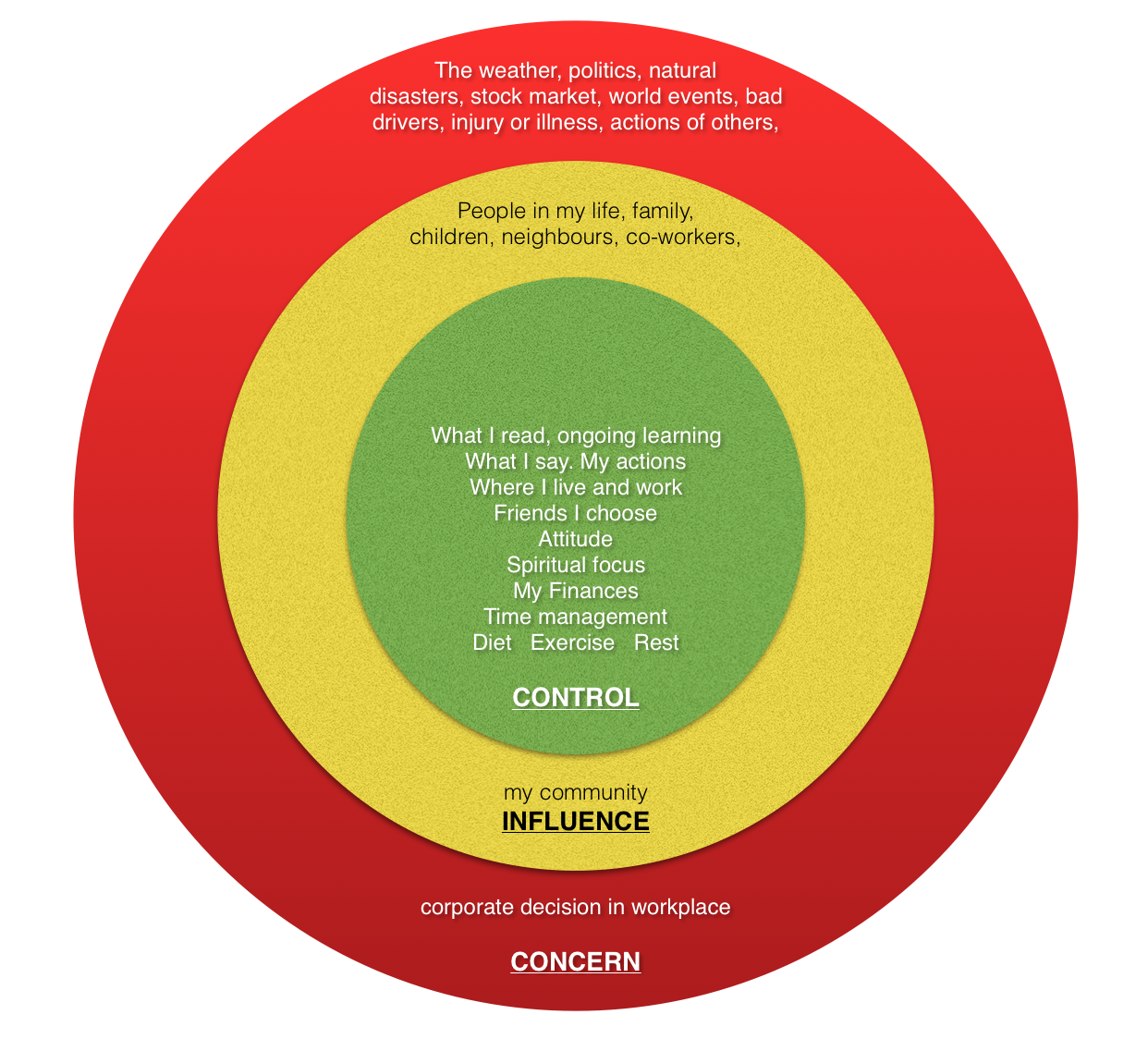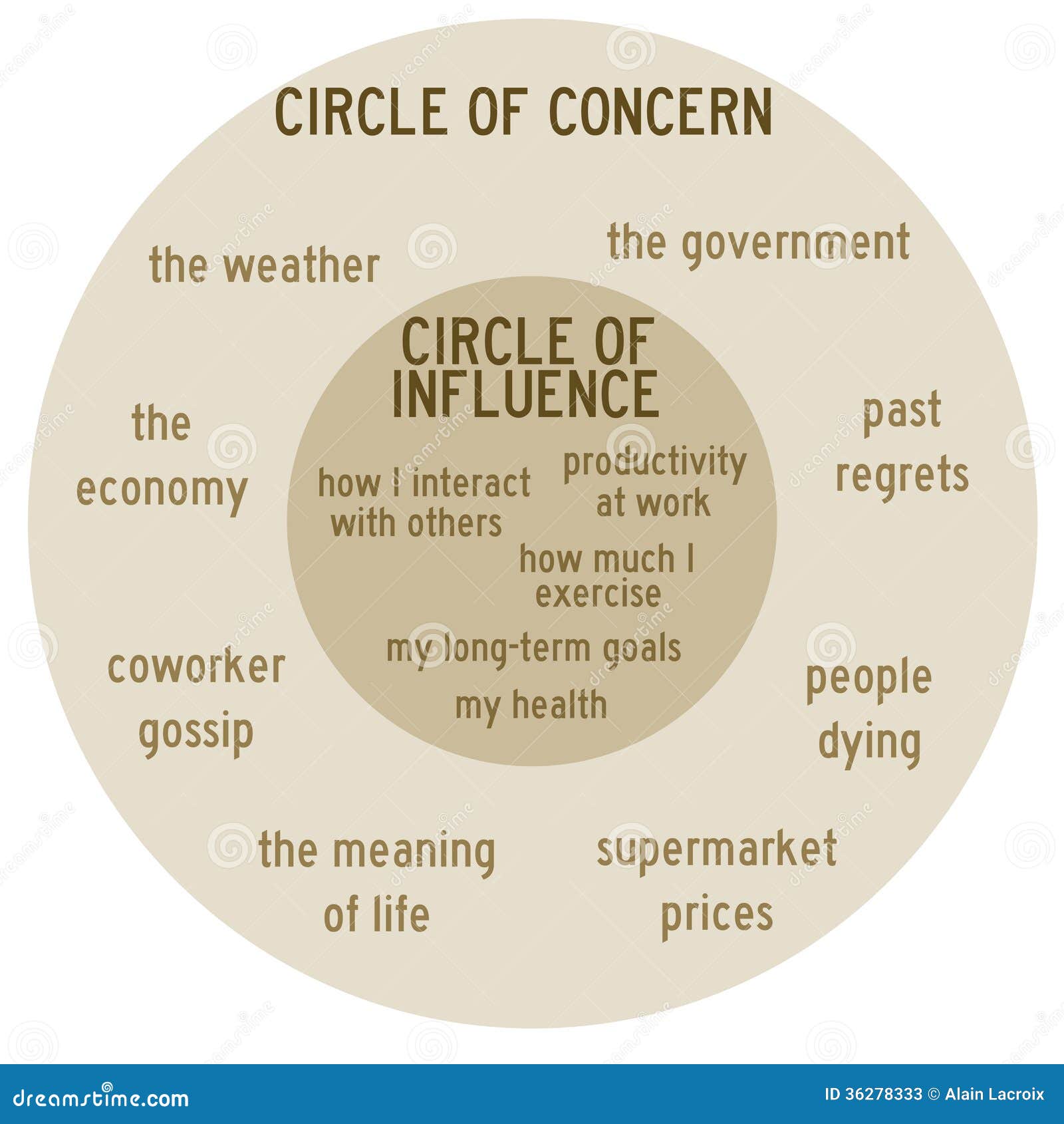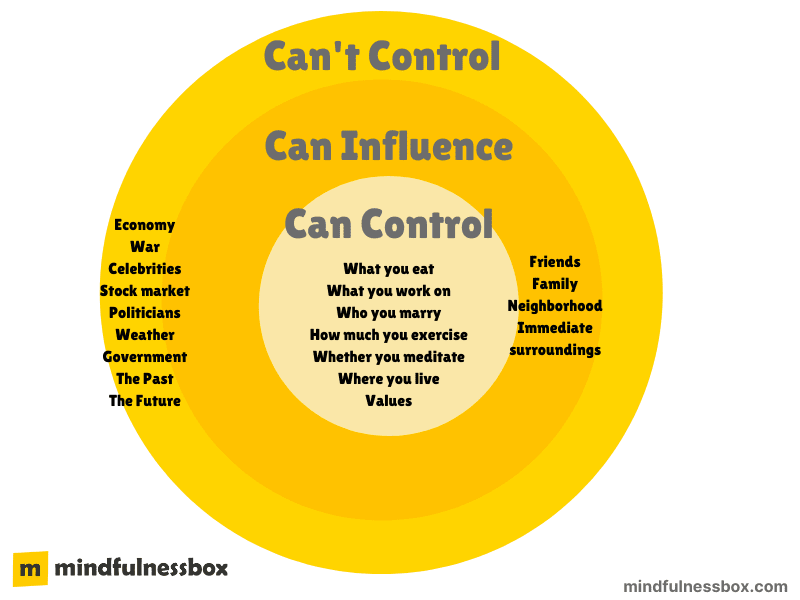
Circle of control sketch note Andi Roberts
Circles of Influence, Concern, and Control - Engage in gratitude practices to shift your focus toward the positive aspects of your life and work. Express appreciation for the support and contributions of others, nurturing a culture of empowerment and collaboration within your circles. 2 Worksheets and Templates for Therapists.

Circle of Influence How to Eliminate Worry Using this Model from Stephen Covey
Influence - be realistic about the concerns you can influence. Score your influence on a scale of 1-10 and any concern scoring lower than 5, move to 'Accept'. Control - direct your time and energy towards the elements that you can control. This will minimise feelings of overwhelm and frustration. Career Development.

Exploring a Team’s Circle of Influence
Using the circle of control, influence and concern tool is a useful way to shift that focus by understanding what we have the power to influence and what is out of our control. This tool works brilliantly for individuals, and also as a team exercise during particularly intense or demanding times. Download our guide to find out how to use it in.

Body Soul and Spirit Circles of Control, Influence and Concern
Circles of Concern, Influence, and Control. By Len Bryan on 03/04/2019 • ( 1 ) Everything we do in our work is an opportunity for advocacy, and we should take full advantage of each opportunity. Every email we send, every conversation we have, every resource we curate, and every event we plan all have an impact on others' perception of us.

The Circle of Control With Family SelfLove Rainbow
The circle of influence is where we have indirect control over things like: You reputation; Your commitments; Other's thoughts of you; Whether people like you or not; Where you work; Your child's future; Your finances; The list can go longer and longer, but understand how the circle of influence works. The middle circle in the Covey circles.

Use This Circle of Control Exercise For Better Mental Health [Free Printable]
One way to reduce overwhelm is to work through the issues you're facing using a tool called the Control Influence Accept/Adapt model. This was first developed by Neil and Sue Thompson in their 2008 book, "The Critically Reflective Practitioner." Control: you use your skills and knowledge to solve the problem.

Circle Of Influence With Concern Or Control Model Explanation Outline Diagram Vector
Alison Trinder December 2020. The Circles of Influence concept, developed by Stephen Covey, can help you recognise which things you can influence and control, and which you cant, even though they may impact on you. Proactive people….. [work on things they can do something about. The nature of their energy is positive, enlarging and magnifying.

What Is the Circle of Control (And How to Use It to Stop Feeling Powerless) (2022)
Recognize what (and how) you can influence and use this clarity to focus your time and energy. Here are 5 more tips: Learn to network. Improve your listening skills. Be curious, ask questions. Find your purpose. Cultivate a proactive, growth mindset. Remember, do all of this with a focus on what you can influence.

Understanding The Circle Of Influence Vs Circle Of Concern
The Circle of Influence includes everything within our life that we can impact or effect. If we can control something, we can get exactly what we want; while influencing means we can impact but can't guarantee results. The number one way to increase your Circle of Influence is by being proactive and focusing on the things you can influence.

How Coveys Circle of Influence Can Make You More Productive Alice Dartnell
1. Circle of Control: This innermost circle represents things that you have direct control over-your thoughts, actions, and behaviours. These are aspects of your life that you can change or influence directly. Examples include your attitude, habits, and how you choose to respond to situations. 2.

How Big is your Circle of Control? Circle of control, Clinical social work, Coping skills
Circles of Control, Influence, and Concern. Use this diagram to structure conversations with students who are experiencing stress, anxiety, or overwhelm. Have the student identify the parts that they cannot control, i.e. in their circle of concern. Second, have the student identify what parts of the situation may fall into the circle of.

Use This Circle of Control Exercise For Better Mental Health [Free Printable]
This is the smallest circle, a subset of the Circle of Influence. What you can control is very limited, but we certainly arent powerless. Your Circle of Control includes what you say, do, think.

Circles of Control personal, group and organisational Taking care of the present
Step 1: Make a list of your concerns. Write them down on a piece of paper, and start organizing them by figuring out what you can directly affect and what is out of your control. Anything you can influence goes in the inner circle, and anything out of your hands goes into the outside. Some worries will be easy to pinpoint, but others may.

How to Take Back Control Inge Dowden Coaching
The main difference between the Circle of Influence and Concern is that you can't affect issues in your Circle of Concern, but you can affect issues in your Circle of Influence. There's also the Circle of Control, which is the part of the Circle of Influence that you have 100% control over. Typically, this includes only things pertaining to.

The Three Circles Of Influence In The agile Mindset
Circle of Influence and Control ActivityHighly effective teams focus and are proactive on spending energy on the things that they can make a timely impact. By doing so, they not only enable themselves to change things for the better, they also create positive energy and widen their influence over things that were previously out of their influence.

Your Circle of Influence and how to extend it
An example of the circle of influence and control is a job interview. An individual can control their preparation for the interview, their appearance, and their responses to interview questions. These things are within their circle of control. However, they cannot control the interviewer's opinion of them or the outcome of the interview.
- Calculo Seccion De Cables Electricos
- Avion Vista Frontal
- Acertijo A Garra De Aguila Mel Gibson Puerro
- Network Adapter Driver Windows 7 Ultimate 64 Bit Free Download
- Ix Torneo Semana Santa Adaba
- Master Uned Psicologia General Sanitaria
- Fusible Mechero Ford Mondeo 2004
- Honda Civic Viii 1 8
- Lo Tengo Todo Pero No Tengo Nada
- Cuidado Con La Señora El Perro No Hace Nada